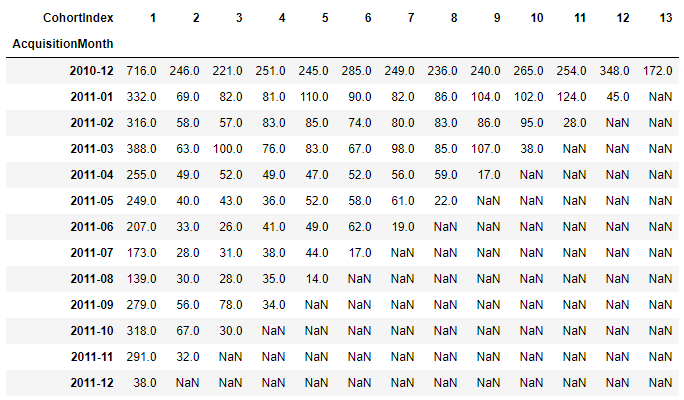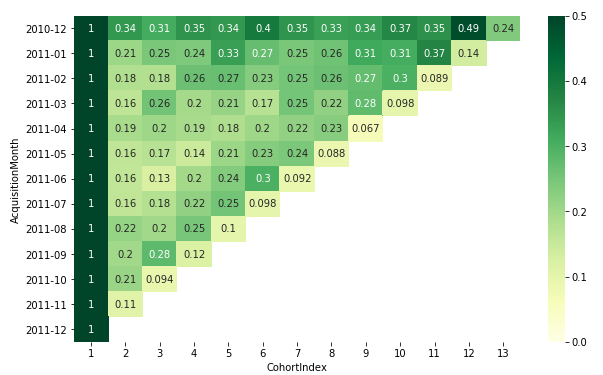Customer Lifetime Value (CLV) basics
Machine Learning for Marketing in Python

Karolis Urbonas
Head of Analytics & Science, Amazon
What is CLV?
- Measurement of customer value
- Can be historical or predicted
- Multiple approaches, depends on business type
- Some methods are formula-based, some are predictive and distribution based
Historical CLV
- Sum revenue of all past transactions
- Multiply by the profit margin
- Alternatively - sum profit of all past transactions, if available
- Challenge 1 - does not account for tenure, retention and churn
- Challenge 2 - does not account for new customers and their future revenue
Basic CLV formula
- Multiply average revenue with profit margin to get average profit
- Multiply it with average customer lifespan
Granular CLV formula
- Multiply average revenue per purchase with average frequency and with profit margin
- Multiply it with average customer lifespan
- Accounts for both average revenue per transaction and average frequency per period
Traditional CLV formula
- Multiply average revenue with profit margin
- Multiple average profit with the retention to churn rate
- Churn can be derived from retention and equals 1 minus retention rate
- Accounts for customer loyalty, most popular approach
Introduction to transactions dataset
- Online retail dataset
- Transactions with spent, quantity and other values
Introduction to cohorts dataset
- Derived from online retail dataset
- Assigned acquisition month
- Pivot table with customer counts in subsequent months after acquisition
- Will use it to calculate retention rate
Calculate monthly retention
Use first month values to calculate cohort sizes
cohort_sizes = cohort_counts.iloc[:,0]
Calculate retention by dividing monthly active users by their initial sizes and derive churn values
retention = cohort_counts.divide(cohort_sizes, axis=0)
churn = 1 - retention
Plot the retention values in a heatmap
sns.heatmap(retention, annot=True, vmin=0, vmax=0.5, cmap="YlGn")
Retention table
Let's calculate some CLV metrics!
Machine Learning for Marketing in Python








